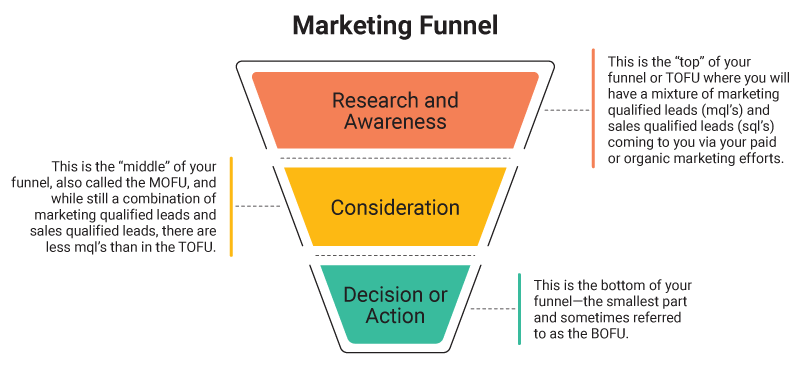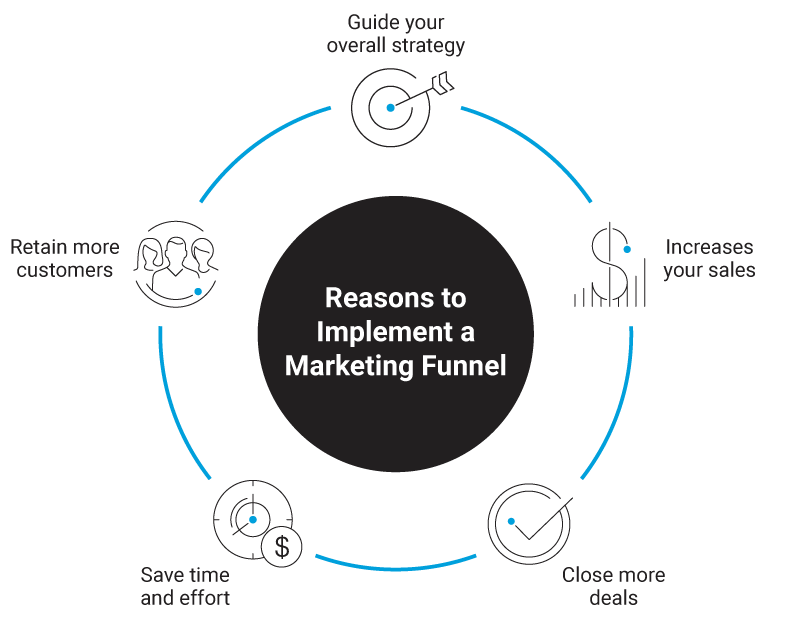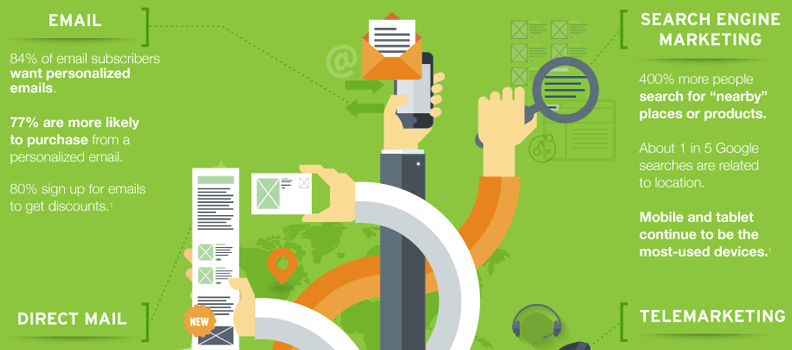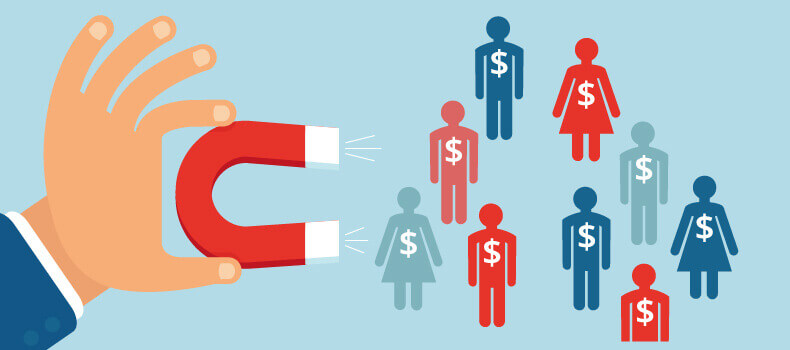You need to find new prospects and turn them into customers.
It sounds simple enough but as anyone who has been involved in sales or marketing for any length of time will tell you—finding new business is tough!
The good news is that with the internet, you have access to billions of people around the world.
And while you may capture the attention of a large number of them with sales or marketing tactics, there is a special, select group of individuals that you want to filter out. These individuals are your ideal customers—the people that will be most interested in purchasing your product or service.
And the way to filter them down?
Your marketing funnel.
Below is the marketing funnel explained. And by the end of this blog, you’ll no doubt have a better understanding of marketing funnel stages and even how the marketing funnel works from top to bottom.
The Benefits of Marketing Funnels
Why do you need a marketing funnel in the first place? It may surprise you to learn that while a marketing funnel is beneficial to your business (we’ll get to that later) it’s especially valuable to your customers.
Why?
It simplifies the journey of your prospects. That’s because marketing funnel stages act like a map at each stage of a prospect’s decision-making process. It also helps them move forward with their decision, offering steps that can be taken. So, no matter how educated (or not) your prospect is about your particular product/service, you can still offer guidance.
Additionally, marketing funnels can be applied to nearly every single interaction or touchpoint with your prospect. And when you understand where your prospect falls in your funnel, you have a better idea of what types of things need to be offered in order to help them.
And perhaps the most significant benefit of marketing funnels is the data insights they can offer your business. A well-run funnel can show you exactly where you’re losing prospects, enabling you to make meaningful changes that can have a big impact on your business.
What are Marketing Funnel Stages?
Envision a funnel. Whether you’re picturing a piece of equipment like what you’d pour liquid through or a tornado came to mind, you’ll likely notice similar attributes. Namely that a funnel is very wide at the top to allow for a lot and by the end, it’s very narrow allowing for more of a trickle.
The same is true of a marketing funnel. At each stage of your funnel, you want your prospects to become more defined and therefore, your funnel becomes narrower.
So, while you may attract thousands of leads (also called prospects) with your marketing and sales tactics (top of funnel, also referred to as TOFU) those who continue their journey to the middle funnel or MOFU will be less.
And those that travel all the way to the bottom of your funnel or BOFU are the prospects most likely to become customers.
All marketing funnels contain at least three stages:

Research and Awareness
This is the “top” of your funnel or TOFU where you will have a mixture of marketing qualified leads (mql’s) and sales qualified leads (sql’s) coming to you via your paid or organic marketing efforts. At this point in the funnel, your only focus is getting eyes on your marketing and sales materials. The leads you’re getting don’t necessarily meet the criteria to become your customer. However, they’re likely on the hunt for education regarding how your product or service solves a specific problem they’re having at the moment and time they come into your funnel. Blogs and case studies are popular marketing tools used in this phase of the marketing funnel.
Consideration
This is the “middle” of your funnel, also called the MOFU, and while still a combination of marketing qualified leads and sales qualified leads, there are less mql’s than in the TOFU. Prospects that are at this point in the funnel have identified their problem. Moreover, they’re much more savvy about the solutions at hand to solve it—including your product or service. Lead here will continue to evaluate you and your competitors so they can determine the best fit not only in terms of a solution, but also things like price, customer service, and availability.
Decision or Action
This is the bottom of your funnel—the smallest part and sometimes referred to as the BOFU. Perhaps you’ve even heard the term “BOFU offer.” Of all the marketing funnel stages, this is the one that holds the most possibility. Prospects who are here will meet the very specific criteria you’ve laid out for serious buyers—but that doesn’t mean your job is done! Even in BOFU, you may need to have multiple meetings and check-ins with your prospect. Be open to answering lingering questions they have and remain patient.
Why are marketing funnels so important?
At this point you should have a better understanding of why your business needs a marketing funnel in order to be successful. Still need a few more reasons as to why you should implement one?

1. Guide your overall strategy
With the help of a marketing funnel, you’ll come to better understand where you’re losing customers and can adjust your strategy accordingly. Is it in the TOFU stage? You need a better brand awareness campaign. BOFU stage? Maybe your sales associates need more support with closing deals.
2. Increases your sales
When you’re not utilizing a funnel, you give prospects more opportunity to disappear. Whereas when you collect prospects in a funnel and have specific steps for each point in your funnel, you can nurture them all the way through.
3. Close more deals
Without a funnel, your sales and marketing teams are only making guesses regarding the behavior of prospects. Whereas when you utilize a marketing funnel, you’ll have better insights into their behavior and what you can do to nudge them along.
4. Save time and effort
When you are completely clear on the journey of your customers, you can better plan for each stage of it. This saves you lots of time and can even ensure you achieve the results you’re after.
5. Retain more customers
It’s less expensive to retain existing customers than to find new ones. Keep in mind that your funnel doesn’t have to end at the purchase point. You should also seek opportunities to keep customers engaged and nurtured even after they’ve purchased from you—and a funnel can help you do exactly that.
Above we offered up the marketing funnel explained! And we hope you found it useful.







